SUMMARY
This is AI generated summarization, which may have errors. For context, always refer to the full article.
![[OPINION] Feasting on farm produce in Mindanao while mulling over food sovereignty](https://www.rappler.com/tachyon/2020/10/ispeak-food.jpg)
I have been locked down in our farm in North Cotabato since mid-March. It is the safest place where I can be in this time of a pandemic. Our nearest neighbor is 500 meters away. Social distancing is no cause for worry.
North Cotabato is one of the 22 provinces in the island of Mindanao. It is plantation country. You find here huge tracts of land planted to fruit trees, bananas, coconuts, rubber, palm oil, coffee, and cacao. Owners of many of these plantations live elsewhere and rely on the local folks to manage their properties. These caretakers have their own plots that are planted to fruits, vegetables, and ornamental plants.
During this stay in North Cotabato, a farm buddy, Inday Ninfa, 43, keeps me company. Our 2-hectare farm, Marbel Forest Garden, is planted to native trees, fruits, vegetables, herbs, and ornamental plants as well. Now that it is fruiting season we have our fill of durian, rambutan, mangosteen, lanzones and marang. We also have raised beds planted to a variety of vegetables — bitter gourd, okra, eggplant, squash, string beans, pechay, radish, bell pepper, finger chilies. We have clipping beds of kangkong, saluyot (Nalta jute), sweet potato, and alugbati (Malabar nightshade) from which we harvest daily.
Our farm is part of a small farming community (pop 1500+) in Kidapawan City where a lot of swapping goes on — for farm produce, seeds, medicinal herbs, ornamental plants. We have traded our fruits for guyabano and bell pepper seeds. We get supplies too from neighbors who sell beef, pork, and dressed chicken, and roving vendors who sell midday snacks made from glutinous rice, bananas, and sweet potato.
Inday Ninfa has her own 3-hectare farm in her home village in Matalam where we spend occasional weekends. On a typical weekend, we eat whatever fruits can be harvested. Lunch is a vegetarian meal (saluyot, sweet potato tops, eggplant, bitter gourd) plus a special treat: a soup of bantam chicken. We drink coconut water 4 times a day! Dessert is a series of fruits: papaya, young coconut meat, bananas, guavas, star fruit, and mandarin oranges.
Inday Ninfa’s mother and aunt — Nanay Fely and Nanay Emang, both 79 years old and widowed — tend vegetable gardens that are the source of healthy meals for any of their children and grandchildren who may decide to drop by. Their vegetable garden is a model of biodiversity. They have at least 9 varieties of papaya and 7 varieties of cayenne pepper. They are able to sell in the local market their excess harvest of sesame seeds and turmeric.
The reality of hunger
In this realm of abundance, where meals are assured and snacks are always within reach on a whim, it is easy to forget that there are places in this world where food is not easy to come by, where malnutrition is a fact of life and death by starvation a stark possibility. But we must not forget.
According to a 2020 UN report, the number of people affected by hunger globally has been gradually on the rise since 2014. Current estimates are that nearly 699 million people are hungry or 8.9% of the world population — up by 10 million people in one year and by nearly 60 million in 5 years.
The bigger challenge for the world is not in accessing food, but in accessing healthy food. The nutritional status of the most vulnerable population groups is likely to deteriorate even further due to the health and socio-economic impacts of COVID-19.
Low-income countries rely more on staple foods and less on fruits and vegetables and animal-sourced foods than high-income countries. We are lucky here in Asia, where there are enough fruits and vegetables available for human consumption that meets the FAO/WHO recommendation of consuming a minimum of 400 g/person/day.
In the ASEAN region, the ASEAN Ministers on Agriculture and Forestry (AMAF) issued a Joint Statement in April reaffirming their commitment to ensuring food security, food safety, and nutrition in the region during this outbreak.
The AMAF pledged to, among others, “minimize disruptions in regional food supply chains by working closely together to ensure that markets are kept open and transportation of agricultural and food products are facilitated.” They also stressed “the importance of reducing excessive price volatility, particularly price spikes, ensuring adequate emergency food and reserves, and providing timely and accurate market information.”
Food security in a pandemic
In Mindanao, provincial governors are now implementing the Self-Sustaining Food Security Strategy (SSFSS) recommended by the Mindanao Development Authority (MinDA) in late March by linking up with one another to ensure stable food supply for their constituents.
Under the SSFSS, the LGU chief executives are tasked to design and implement a food security action plan, conduct an inventory and quantify existing supplies of basic food commodities like rice, eggs, poultry, meat and fruits, and identify individuals or groups which can undertake sustained food production.
MinDA is encouraging families, especially those confined to their farms, to undertake simple food production activities like vegetable growing and backyard chicken raising, thus creating a localized market for farmers’ produce that cannot be efficiently distributed due to the constraints of lockdowns.
MinDA head Emmanuel Piñol believes the system will ensure available food supply for the families within the community, while at the same time be mindful of the COVID-19 quarantine protocols being enforced.
Although the provincial governors in Mindanao have all said they have enough food supplies for their constituents, there may be a problem of distribution due to COVID-19 lockdowns. What they should therefore be aiming for is not simple food security but food sovereignty. In fact, in many situations, there can be no food security without food sovereignty.
What does that mean? Food security, as defined by the UN Committee on World Food Security, means that all people, at all times, have physical, social, and economic access to sufficient, safe, and nutritious food that meets their food preferences and dietary needs for an active and healthy life. For food security to be durable, however, there has to be food sovereignty.
What is food sovereignty?
A regime of food sovereignty not only prescribes that all people should have the income to have access to food and nutrition; it also requires that those who produce food have control of the distribution of their produce as well as the assets that make possible the production of food including seeds, land, bodies of water, livestock, and biodiversity.
The expected immediate result of this arrangement is the reduction of the distance between producer and consumer, a greater emphasis on small-scale food production, a more benign interaction between food producer and the environment and, most important, greater food security in the area where food sovereignty is practiced. In fact, while food sovereignty is normally associated with localized distribution and consumption, especially during pandemic lockdowns, in better times it can bring about a large surplus that can be transported to other places, even to other countries.
Is there food sovereignty in Mindanao today? To some extent, in some places, there may be. In Inday Ninfa’s sitio, New Leon, some 40 families, most of them related to one another, tend to agriculturally productive landholdings that range in area from 0.5 to 12 hectares per family. In combination with a sufficient number of villages that are similarly productive, they could, if properly organized and their marketing efforts facilitated, bring about and distribute enough produce to make a difference in the global fight against hunger.
Mindanao with its vast tracts of agricultural lands and waters pregnant with fisheries can be part of the solution to the global problem of hunger and malnutrition, but first there must be food sovereignty among its many skillful food producers. The government must be able to look beyond the immediate need for food security, and craft and implement policies that promote food sovereignty. – Rappler.com
Note: Modified versions of this article will be published in the World, Region, and Nation section of Pinter Politik Indonesia and the Ateneo de Manila University’s journal Budhi: A Journal of Ideas and Culture.
Bernardita Azurin-Quimpo is a writer, psychologist, and farmer. She is an independent consultant and has worked with educational nonprofits running scholarship programs. She is now semi-retired and spends her time developing a forest garden in Kidapawan City, North Cotabato.
Add a comment
How does this make you feel?







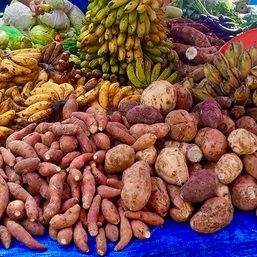
![[OPINION] Hungry children do not make good students](https://www.rappler.com/tachyon/2024/01/imho-PH-PISA-scores-jan-27-2024.jpg?resize=257%2C257&crop=260px%2C0px%2C720px%2C720px)
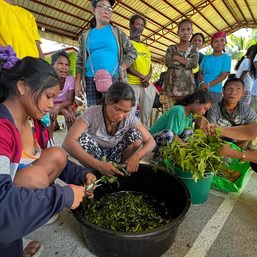

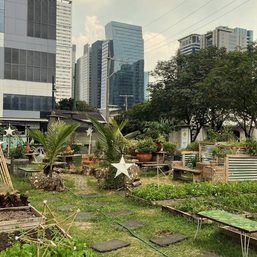
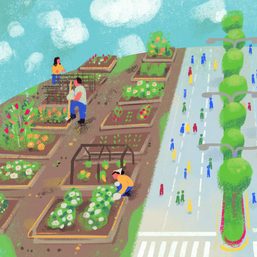
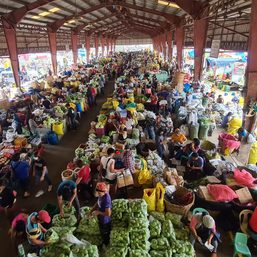
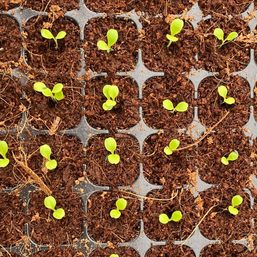
There are no comments yet. Add your comment to start the conversation.